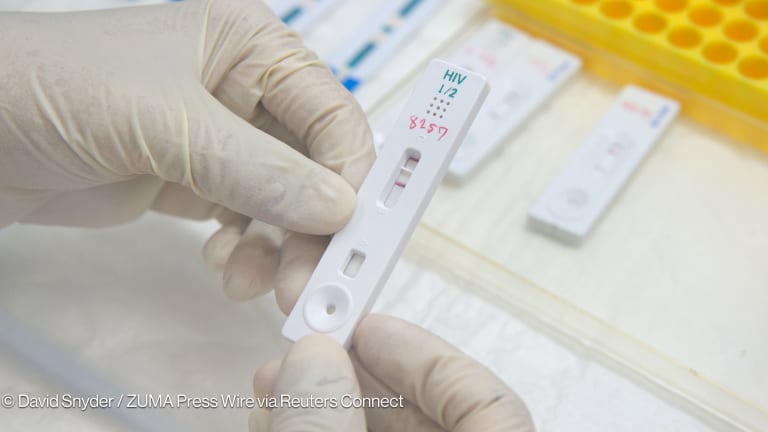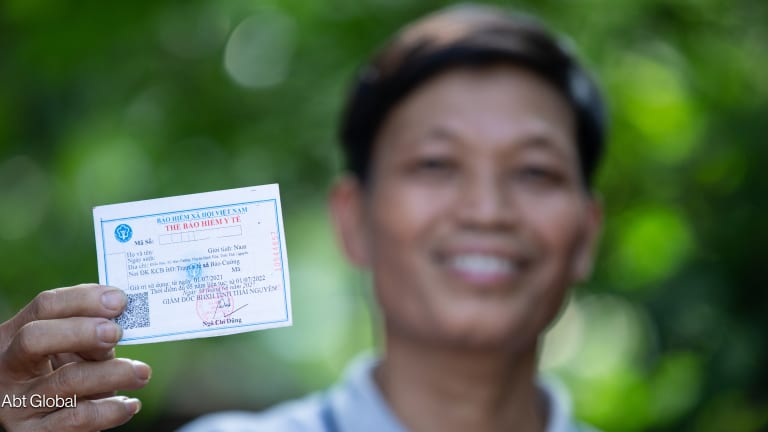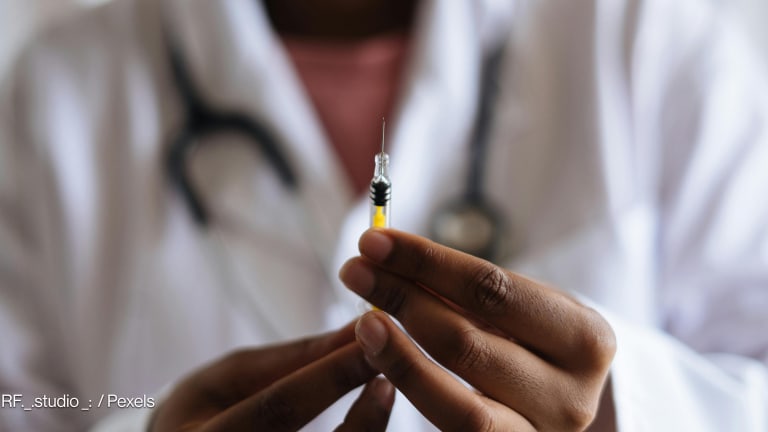
HIV-related stigma and discrimination in health care settings remains a formidable roadblock in the drive to end the HIV pandemic. Diverse in manifestation but invariably damaging at its core, stigma prevents people with HIV from reaping the full benefit of necessary, often life-saving medical care. As the pandemic lingers into its fifth decade, new strategies are needed to ensure that stigma reduction becomes a routine function of HIV treatment and prevention programs.
Stigma has long been recognized as a barrier to engagement in HIV care. In the health care setting, stigma presents itself in numerous ways, including lower quality treatment, negative attitudes, breaches of privacy and confidentiality, neglect, and denial of care. At the policy level, stigma may take the form of procedures that mark people with HIV as “other” while normalizing inequitable treatment on the basis of real or perceived HIV status.
Until recently, providers and policymakers assumed HIV-related stigma in health care settings to be largely immune to direct intervention. Omnipresent but elusive, stigma was viewed as a stubborn reality, an invisible enemy in the fight against the virus.
But pioneering research from the past decade has rewritten this narrative. Indeed, the success of interventions such as changes in policy, training, and active involvement of people with HIV bolster a new consensus that stigma in health care settings can, and should, be addressed. But like any new consensus, the re-imagination of stigma reduction as both achievable and necessary has generated unique challenges, including questions of how to spread stigma-reduction interventions beyond the limits of small pilot projects and how to ensure interventions “stick” in the long term.
A new network to bring about change
To meet these challenges, in 2017, the University of California San Francisco HEALTHQUAL launched the Southeast Asia HIV Stigma and Discrimination Quality Improvement Learning Network, or QIS+D.
With generous support from the U.S. President’s Emergency Plan for AIDS Relief, Gilead Sciences, and ViiV Healthcare, QIS+D convened ministries of health from Cambodia, Laos, Malaysia, the Philippines, Thailand, and Vietnam — six countries where concentrated epidemics among men who have sex with men, transgender women, sex workers, and people who inject drugs have blossomed against a backdrop of widespread HIV-related stigma in health care settings.
Joined by the UNAIDS Asia Pacific Regional Team as a co-sponsor, QIS+D is recognized as a component of the Global Partnership for Action to Eliminate all forms of HIV-related Stigma and Discrimination and by the Association of Southeast Asian Nations’ Declaration of Commitment on HIV/AIDS to achieve zero discrimination.
Q&A: How COVID-19 is impacting HIV care in Asia-Pacific
A new survey reveals the extent to which COVID-19 is wreaking havoc on HIV care and prevention in the Asia-Pacific region. Sustained Health Initiatives of the Philippines' Dr. Katerina Leyritana lays out what that looks like in the Philippines.
In convening the QIS+D, we sought to apply a known approach to a new problem. With decades-old roots in statistics and manufacturing, quality improvement, or QI, harnesses the power of collaboration, cycles of performance measurement, tests of change, and local knowledge to understand how the behavior of systems — rather than individuals — conspires to generate poor outcomes.
These systems include the roles, relationships, policies, practices, processes, and incentives that influence whether problems like stigma become ingrained in organizational practice.
Although QI had never been applied to tackle HIV-related stigma, we believed that it would be an ideal conduit for achieving scalability: practical, well-understood, and readily adaptable to local contexts.
Applying QI methods to stigma reduction
QIS+D has adopted common measures to assess stigma through surveys of health care workers and patients in facilities across participating countries. At the launch of the initiative, eight health care worker questions were prioritized by stakeholders from participating countries, and are a subset of Laura Nyblade’s Health Policy Plus survey.
These questions cover four major domains of stigma: attitudes, observations of enacted stigma, organizational policies, and fear of transmission. Patient feedback is assessed by seven prioritized questions that are commonly used in global patient experience assessments, addressing respect, privacy, friendliness, adequacy of information, participation in decision-making, and experienced stigma.
In addition to these common measures, patients are asked questions to gauge their HIV health literacy: their viral load levels, treatment regimens, and next appointments. Health literacy is a key factor for self-efficacy and empowerment, enabling people with HIV to participate more directly in their care and reduce feelings of self-stigma.
The approach to routine measurement is adapted in each country to facilitate integration of QIS+D into existing programs and systems. In Laos, Thailand, and Vietnam, health care worker surveys are captured through a web-based mobile application developed by Dr. Kriengkrai Srithanaviboonchai at RIHES-Chiang Mai University, which enables respondents to respond anonymously via QR codes on mobile phones. Patient experience surveys are collected either in person or via electronic survey. In Cambodia, peer navigators administer surveys using tablets as part of a comprehensive patient satisfaction feedback survey.
Following measurement and problem identification, QI methods are applied to understand how the local systems may abet the four drivers of stigma. Teams of staff and clients then identify and test interventions, which are evaluated by routine re-measurement to determine whether improvement has occurred. Often, multiple interventions are implemented in a “bundle” or a “package” to address multiple drivers simultaneously.
At the regional level, stakeholders engage in peer exchange to share knowledge and identify best practices. Through eight regional QIS+D meetings convened to date, ministries of health, implementers and community members from the network’s six participating countries have exchanged knowledge on how to address problems and overcome challenges.
As part of these meetings, common measures and results are compared, and interactive, joint problem-solving sessions are organized to overcome implementation challenges. Experiential knowledge from the network is then applied by ministries of health through their national stigma reduction QI networks, where information is exchanged among health care facilities as part of national stigma and quality improvement programs.
Examples of QI interventions from participating countries
Notable examples from countries include efforts to make clinics “friendlier” and more welcoming to patients. At Champasak Hospital in Laos, staff were trained on how to be welcoming in registration areas, signage was clarified to improve patient navigation, and weekly stigma reduction case conferences and training sessions were convened.
In Vietnam, facilities have launched community advisory boards that engage people with HIV in the design, management, and evaluation of stigma reduction activities. At Binh Duong Hospital, just outside Ho Chi Minh City, feedback gathered by the facility’s board led to the expansion of clinic hours to reduce waiting and crowding, discontinuation of the practice of announcing patient names over loudspeakers, and the removal of identifying information from documents that inadvertently disclose HIV status.
In Thailand, several interventions that address fear of transmission and privacy have been implemented including elimination of policies that separate women with HIV from other women in obstetrical wards. In Songkhla Province, a dedicated QI learning network for provincial health facilities was launched to rapidly share successful strategies, including elimination of HIV-specific labeling and coding, bolstering of infection control curricula, and integration of S&D activities with existing QI and hospital accreditation activities.
To date, participating facilities across QIS+D countries have tested 27 unique interventions, spanning all drivers of stigma. As teams refine their QI approaches, successful interventions are chosen for scale up and spread.
HIV treatment and prevention programs have made extraordinary progress in addressing HIV-related stigma in health care settings, but as the world confronts stalled progress in the push to end the HIV pandemic, bold policies and strategies to end stigma are needed. As programs seek out new ways to combat stigma, we hope that lessons learned from QIS+D may guide these programs in establishing stigma reduction as a routine and necessary component of HIV service delivery.
Find out more about UCSF-HEALTHQUAL and its work.









